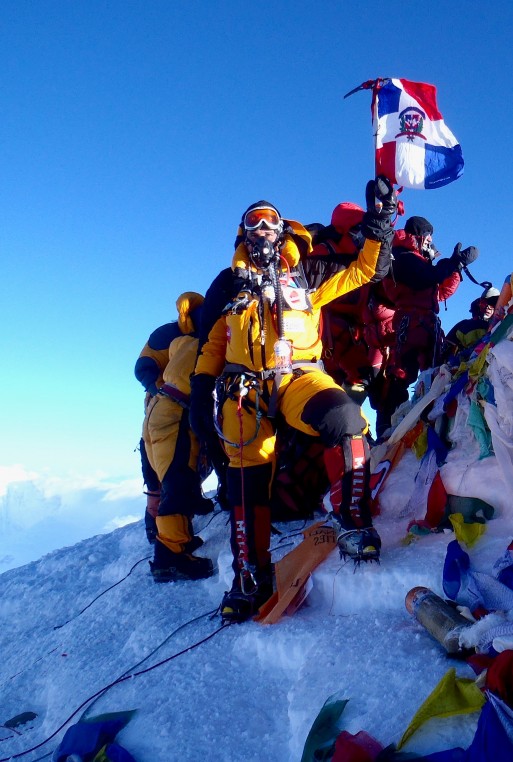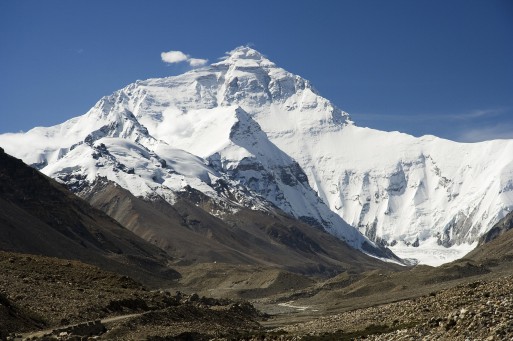
Credit: Wikipedia
Standing at 29,029 feet ( or 8,848 meters) and growing taller each year, Mount Everest remains the ultimate bucket list item for serious mountaineers and wistful dreamers. For so many, the challenge that is presented by summiting the highest point on our earth symbolizes a core aspect of humanity: mind over matter. Each year hundreds of people try to tackle a mountain that just over 4,000 people have been able to summit since the first successful effort was made in 1954. Everest has developed a new reputation as the highest cemetery in the world: over 200 adventurers have fatally frozen themselves to the rock, and adventurers have scattered countless piles of ashes in the winds of the majestic peaks over the years.
Mount Everest remains the ultimate bucket list item for serious mountaineers and wistful dreamers.
In fact, while the mortality rate of climbing the mountain has decreased, the bodies of mountaineers from as early as the ‘20s have become landmarks and obstacles that climbers must look out for on their way to the summit. The most famous of these body-landmarks is known as “Green Boots”, which is the body of an Indian climber who took shelter in a small cave in a storm in 1996. He remains on the mountain just below the “first step” of Everest at 27,390 feet, marking the first of three obstacles that climbers must navigate to reach the summit on the northeast side of the mountain.
The bodies of mountaineers from as early as the ‘20s have become landmarks and obstacles that climbers must look out for on their way to the summit.
The sky-high resting places of the handful of bodies above the death zone at 26,000 ft (8,000 meters) bear a striking resemblance to Tibetan Sky Burials, which are practiced in the base of Everest on the northern side of the mountain. Just as native Tibetans practice the sky burials as a means of returning the body to nature, a handful of international climbers have inadvertently joined them in this tradition as they become a part of the sacred landscape of Everest.

Credit: Wikipedia
However, many Nepalese Sherpas frown upon the idea of Everest as a cemetery, as it devalues the spiritual weight with which the mountain is held in their eyes; the presence of the graves at the summit remain a reminder of our fragile relationship with nature. Although, as of 2014, climbers must now bring back 8 kgs of trash from the summit of the mountain to counteract the growing trash problem at the higher altitudes (any remains from memorials of those who were not able to make the trek back are not scheduled to be returned home any time soon).
Unless expensive expeditions are mounted on behalf of the family members of those who have perished, these memento moris will remain at the peak of the earth, interlinking the various heritages of those who have passed with the Tibetan and Nepalese people as a reminder of how death can transcend typical cultural boundaries and traditions.
Related SevenPonds Articles:
- Tibetan Buddhist Burial Ritual
- Restoring Coral Reefs through Sea Burial
- Is Space Burial the Funeral Practice of the 21st Century?

 Breaching the Death Zone: Death and Memorials at the Top of Mount Everest
Breaching the Death Zone: Death and Memorials at the Top of Mount Everest


 “Help Me, Helen”
“Help Me, Helen”
 Recovering Cremation Remains After the Los Angeles Fires
Recovering Cremation Remains After the Los Angeles Fires
 “As Tears Go By” by Marianne Faithfull
“As Tears Go By” by Marianne Faithfull














